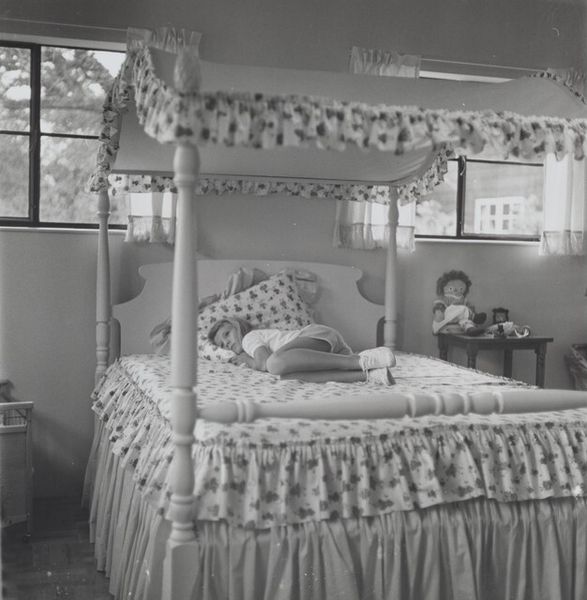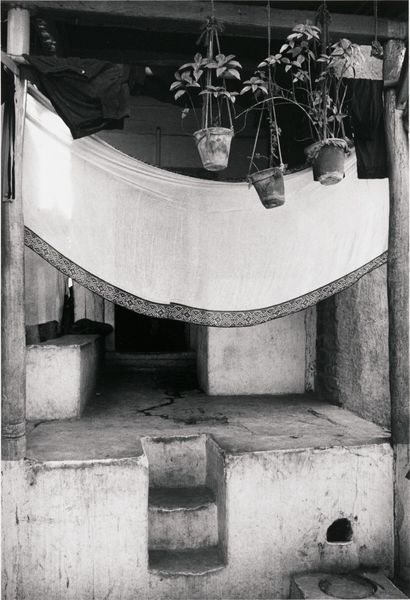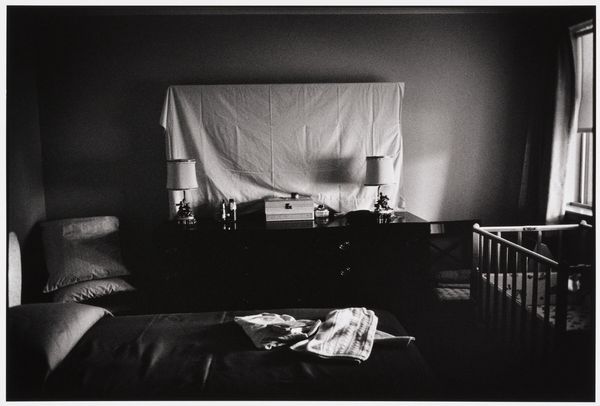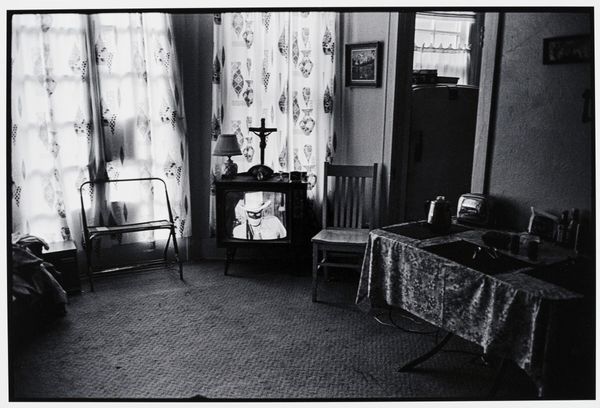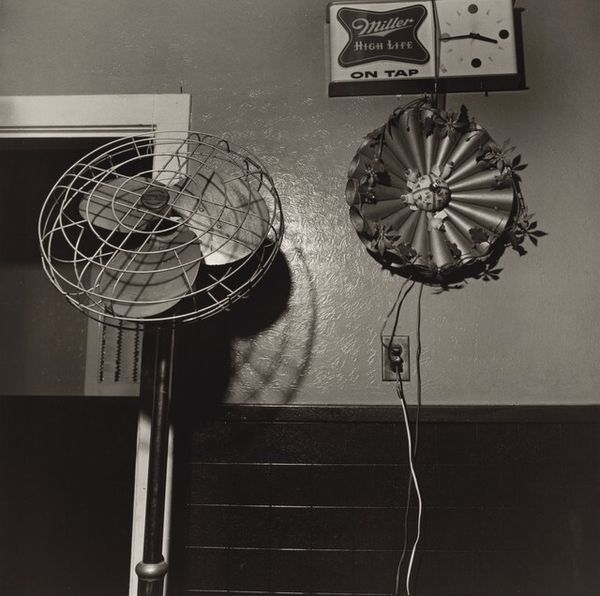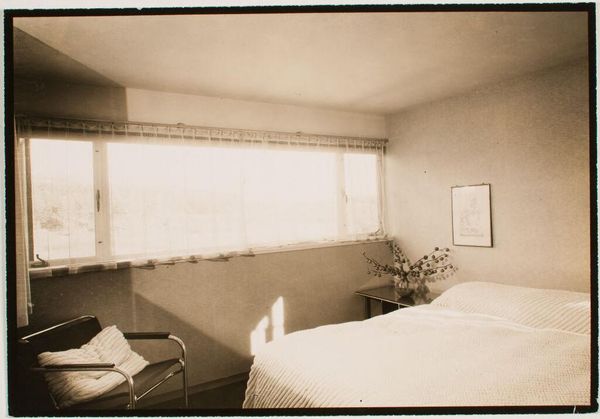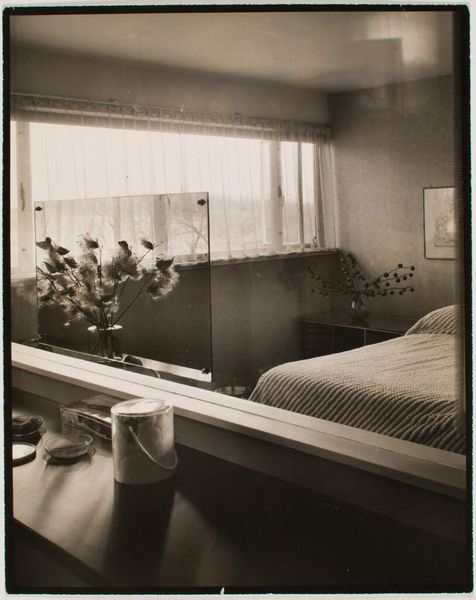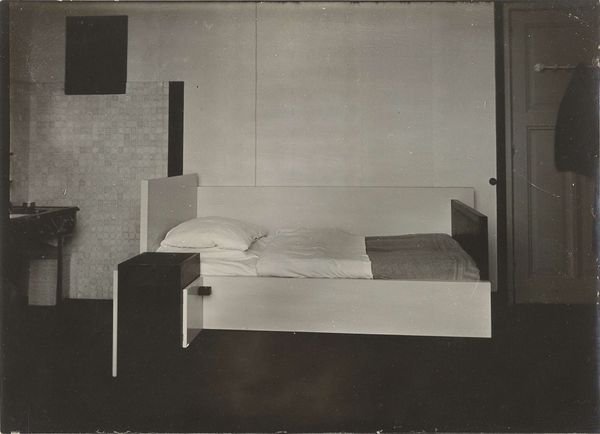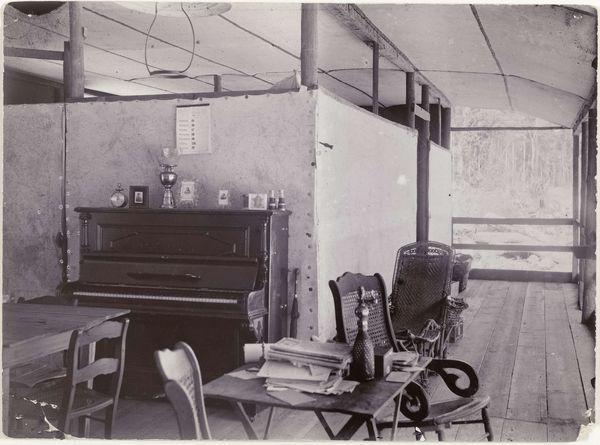
photography, gelatin-silver-print
#
portrait
#
black and white photography
#
black and white format
#
archive photography
#
street-photography
#
photography
#
gelatin-silver-print
#
monochrome photography
#
ashcan-school
#
genre-painting
#
monochrome
#
realism
#
monochrome
Dimensions: sheet: 15.7 x 20.3 cm (6 3/16 x 8 in.)
Copyright: National Gallery of Art: CC0 1.0
Editor: We’re looking at Walker Evans’ "Hudson Street Boarding House Detail, New York," a gelatin-silver print from 1931. The room is so still, so incredibly…unadorned. What catches your eye in this photograph? Curator: The starkness is indeed arresting. What interests me is how Evans, through this seemingly simple composition, invites us to consider the social and economic realities of the time. This image isn't just about an empty room; it's about the people who occupied it, their lives shaped by the Depression-era circumstances. Do you notice the textures, the rough wall, the worn bedding? Editor: Yes, those details contribute to the sense of lived-in…almost…desperation. Curator: Precisely! Evans worked for the Farm Security Administration, documenting the effects of the Depression. He consciously used photography as a tool for social commentary. The composition itself—the claustrophobic space, the light struggling to enter—symbolizes the limited opportunities and harsh conditions faced by many during this period. Editor: So, it's less about the aesthetic and more about what it represents? Curator: It's both, wouldn't you say? Evans' skill lies in his ability to use the formal elements of photography to convey profound social meaning. The very act of documenting these spaces and making them visible to a wider audience was a political act. It challenged the prevailing narratives of prosperity and revealed a hidden reality. The institutions framing these images, and how they circulate through society, informs how the broader public received this image. How does seeing this piece change your understanding of art and its role? Editor: I think it reinforces how art can be a really powerful witness, a form of visual history that speaks to social conditions beyond the purely aesthetic. Curator: Indeed. It's a reminder that art is never created in a vacuum. And considering these things leads to new questions.
Comments
No comments
Be the first to comment and join the conversation on the ultimate creative platform.
